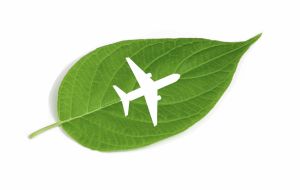As the business aviation sector strives to enhance its environmental impact, sustainable aviation fuel (SAF) emerges as a crucial strategy for achieving net zero emissions by 2050. A recent panel at EBACE featured experts from Air bp, Signature Aviation, World Fuel Services, and VistaJet, who discussed the entire SAF ecosystem, from feedstocks to regulatory mandates.
In a significant step last year, the European Parliament and European Council agreed on the ReFuelEU proposal, which mandates a gradual increase in blended SAF usage starting next year. According to Keith Sawyer, Avfuel’s manager of alternative fuels, fuel suppliers must provide a 2% SAF blend by 2025, scaling up to 70% by 2050. The exact qualifying blend ratio is still under determination.
The UK is also implementing a similar proposal starting early next year, requiring a 10% blend by 2030 and commencing a SAF usage mandate in 2025. Norway, Sweden, and France have already introduced SAF mandates.
Currently, global SAF production represents less than 1% of jet fuel consumption, with most SAF produced via the HEFA pathway—synthetic paraffinic kerosene from used cooking oils, fats, and greases. While HEFA is a first-generation SAF, concerns about feedstock availability persist. Avfuel executive vice president C.R. Sincock highlighted the challenge of significantly scaling up HEFA SAF production beyond the current sub-1% level.
Daniel Coetzer, CEO of Titan Fuels International, noted slow growth in the European SAF market, largely reliant on HEFA. Despite government financing and subsidies for refinery upgrades, feedstock shortages remain a hurdle. Coetzer remarked on the limited availability of materials like used cooking oil, emphasizing the need for alternative feedstocks.
Fortunately, new technologies and production pathways are emerging. Second-generation SAF pathways, such as alcohol-to-jet, use feedstocks like ethanol from crops, though political and environmental considerations complicate their adoption. In the U.S., only 2% of the corn crop is used for human consumption, highlighting potential feedstock sources.
Honeywell's recent improvements to its Unicracking technology, which employs the Fischer-Tropsch process, allow processing a wider range of biomass feedstocks into SAF. Over 50 sites globally have licensed Honeywell's SAF technologies, with a projected combined capacity of more than 500,000 barrels per day when fully operational.
Power-to-liquid technology, which produces SAF from hydrogen and carbon dioxide using electricity, offers a promising long-term solution. Sincock noted its scalability and sustainability, provided the electricity used is renewable.
Currently, 59 renewable refineries are planned or under conversion globally, including projects by Total, Repsol, SkyNRG, and ENI. However, sourcing SAF remains a challenge. Coetzer recounted a customer's difficulty in purchasing bulk SAF, underscoring the nascent state of the market compared to conventional jet fuel.
Concerns about meeting SAF mandates persist, given the industry's current capabilities. Coetzer questioned the feasibility of the targets and the speed at which they are being implemented, suggesting a need for more consultation and realistic timelines.
SAF is approved for use up to 50% blends with conventional jet-A, due to the need for aromatic compounds in petroleum to ensure proper functioning of aircraft fuel systems. In its pure form, SAF can reduce life cycle carbon dioxide emissions by up to 80%, as demonstrated by aircraft testing from Gulfstream and Embraer.
Blended SAF is available at around 30 European airports, with regulations prioritizing larger airports. Sawyer explained that fuel suppliers must prioritize airports with over 800,000 passengers annually, impacting business aviation's access to SAF at major hubs like Schiphol and Frankfurt.
In anticipation of the Paris Summer Olympics, Avfuel announced permanent SAF supplies at three French airports: Paris Le Bourget, Bordeaux-Mérignac, and Clermont-Ferrand Auvergne. The 30% SAF blend, produced from used cooking oil, offers a significant reduction in carbon emissions.
European operators are becoming more knowledgeable about SAF. Noel Siggery of AEG Fuels observed a shift in understanding and demand for SAF among general aviation operators, with some seeking higher blend percentages for their aircraft.
Despite SAF's compatibility with conventional jet-A, logistical challenges remain in ensuring widespread availability across all regions. Siggery emphasized the need for sustainable transportation and distribution of SAF to smaller and regional airports.
The journey toward widespread SAF adoption involves overcoming production, distribution, and regulatory challenges. However, the potential for substantial carbon emission reductions makes SAF a key component of the aviation industry's future.





